ARTICLE
Sozni Embroidery
An embroidery style from Kashmir, sozni or suzani needlework designs are usually used to embellish kani weave pashmina shawls, and have been luxury handloom items since the Mughal rule in South Asia. The embroidery is characterised by geometric patterns, floral motifs and variations of buta, such as paisley and kairi.
Sozni embroidery is intricate and time-consuming — in rare cases, a single shawl takes years to be embroidered. The key feature of the embroidery is the dorukha method of stitching: after stamping the planned pattern on the shawl using carved walnut wood blocks, a type of stem stitch is used to wrap each warp yarn with a coloured thread. Usually, two or three colours are used in sozni designs, with the main design rendered in a single continuous thread. The resultant pattern is layered, dense and visible on both sides of the shawl. After the embroidery is completed, the shawl is washed, dried and pressed using large rotating cylinders in order to even out the surface. The embroidery is practised mainly by men in household workshops with some assistance from the women of the family.
While shawls with sozni embroidery continue to be regarded as luxury items, the number of kani weavers and sozni embroiderers has reduced over the last few decades. The lack of mechanisation in the craft adds further social and financial pressure on existing artisans. Today, the craft continues to be supported by non-profit organisations such as Dastkari Haat Samiti, especially to aid with documentation and spreading public awareness.
Bibliography
Our website is currently undergoing maintenance and re-design, due to which we have had to take down some of our bibliographies. While these will be re-published shortly, you can request references for specific articles by writing to hellomapacademy@map-india.org.




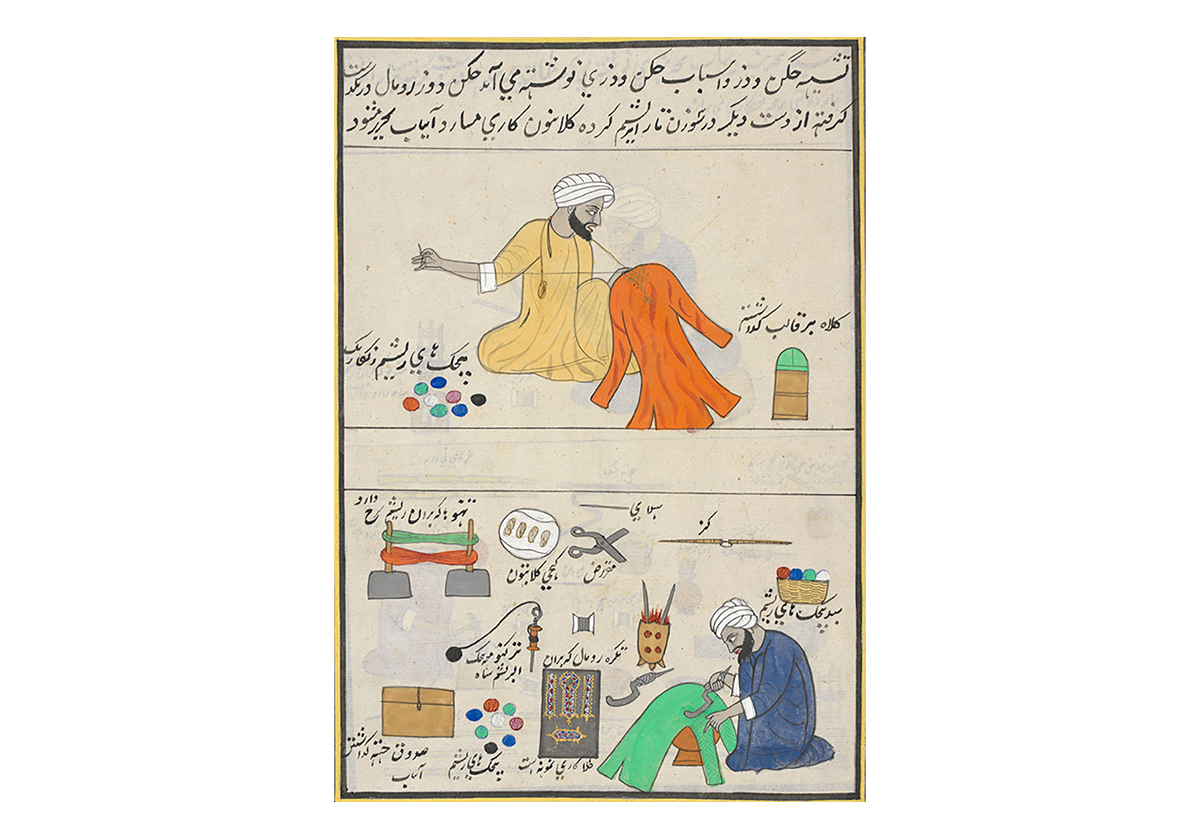

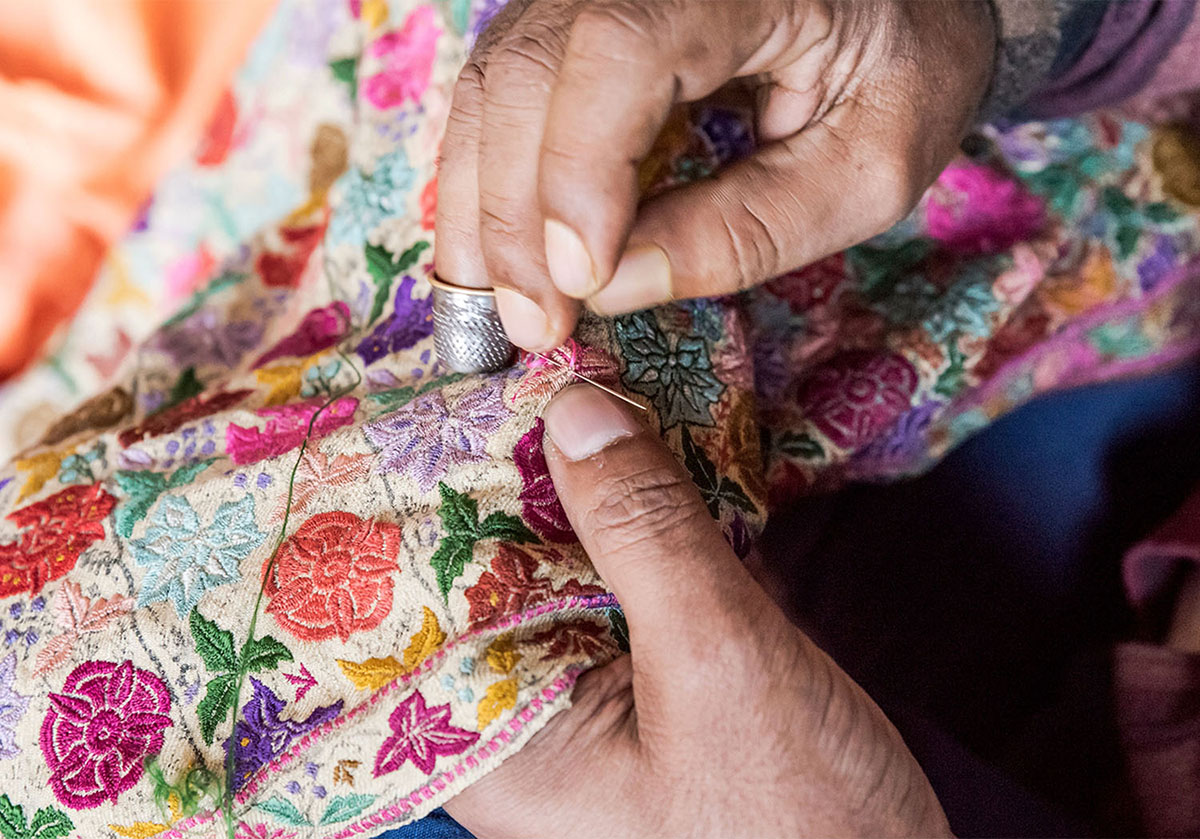
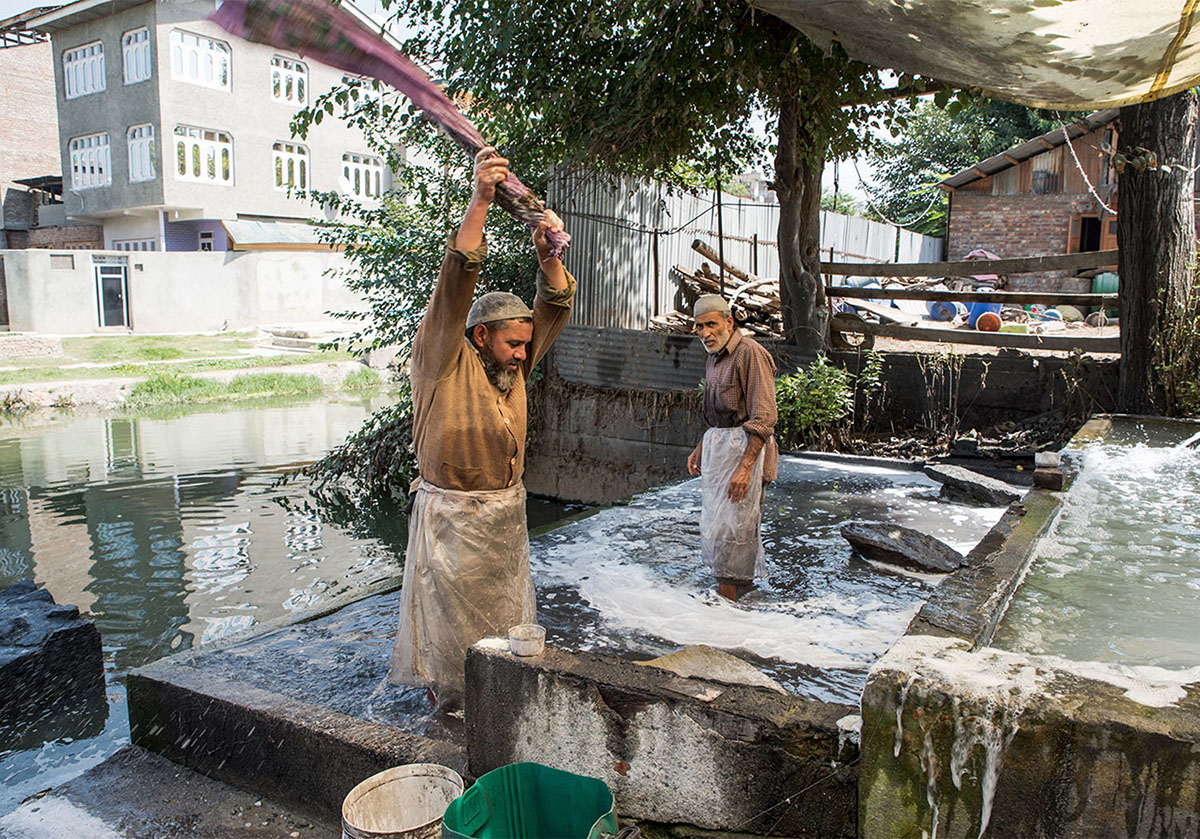
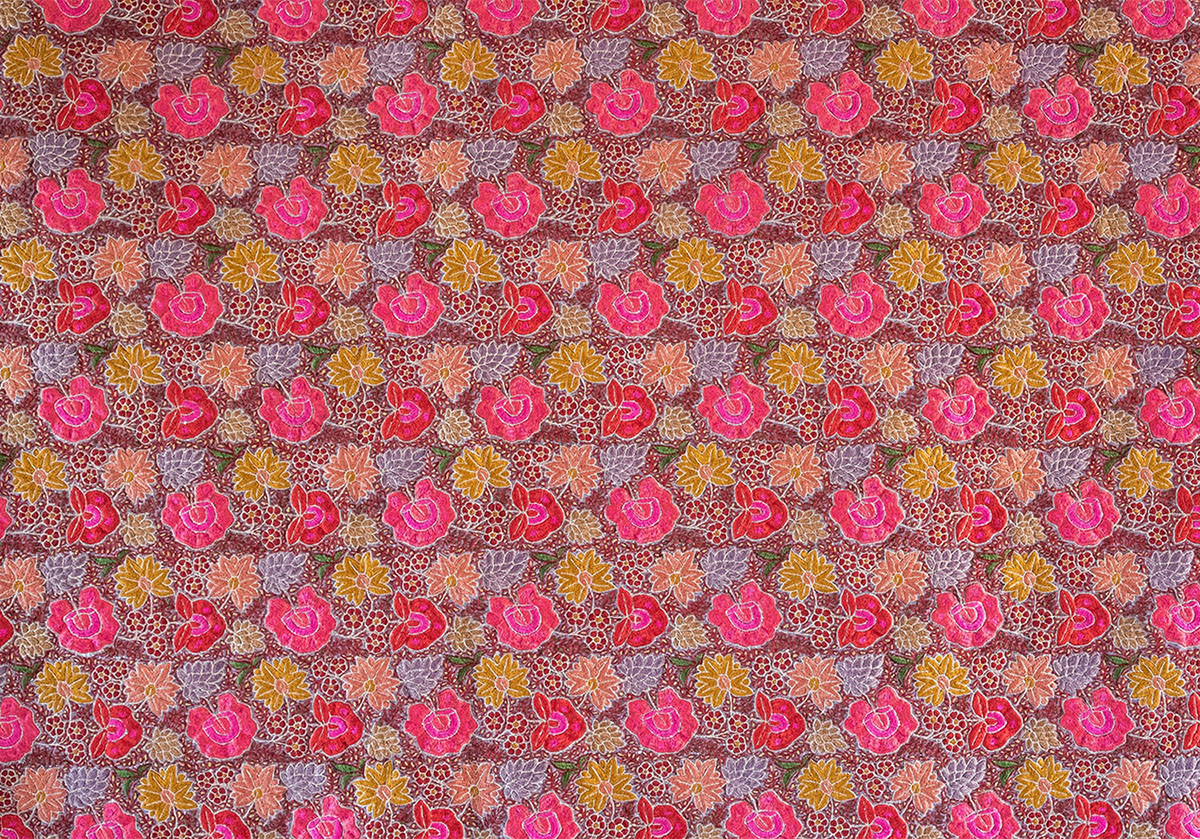
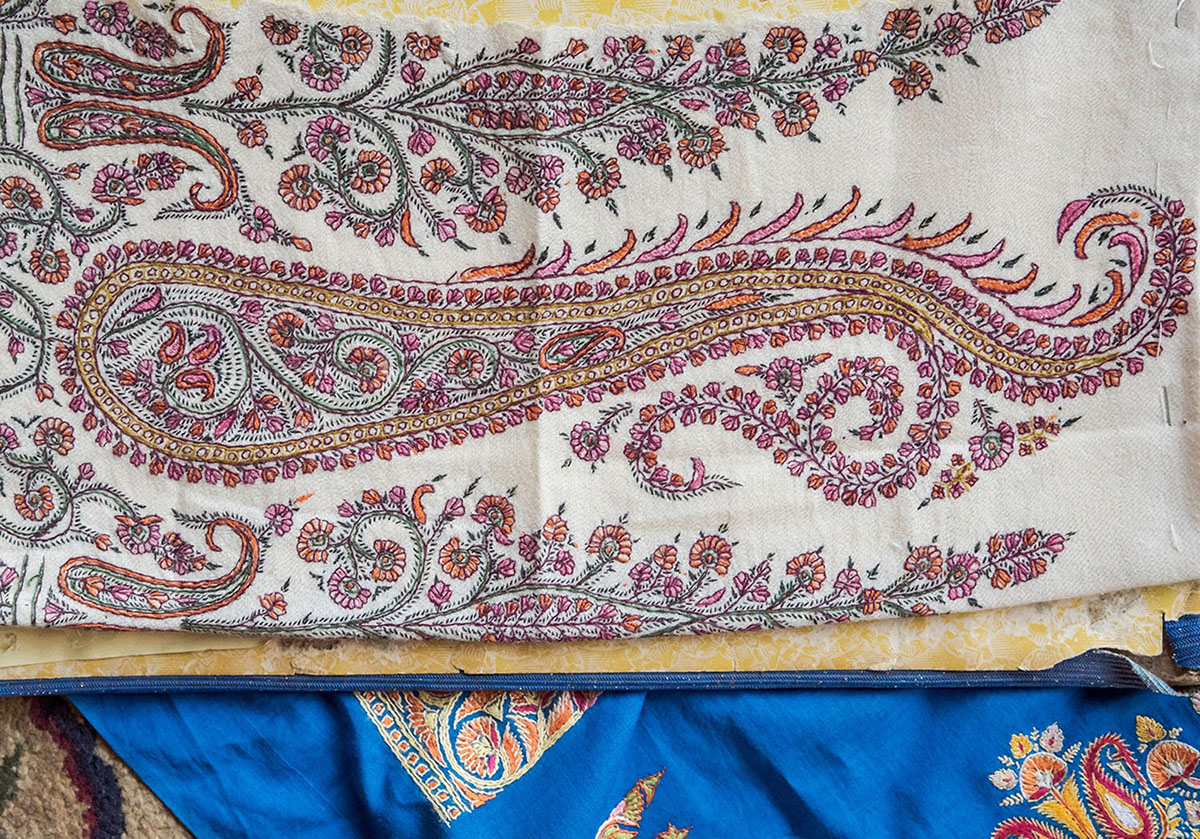
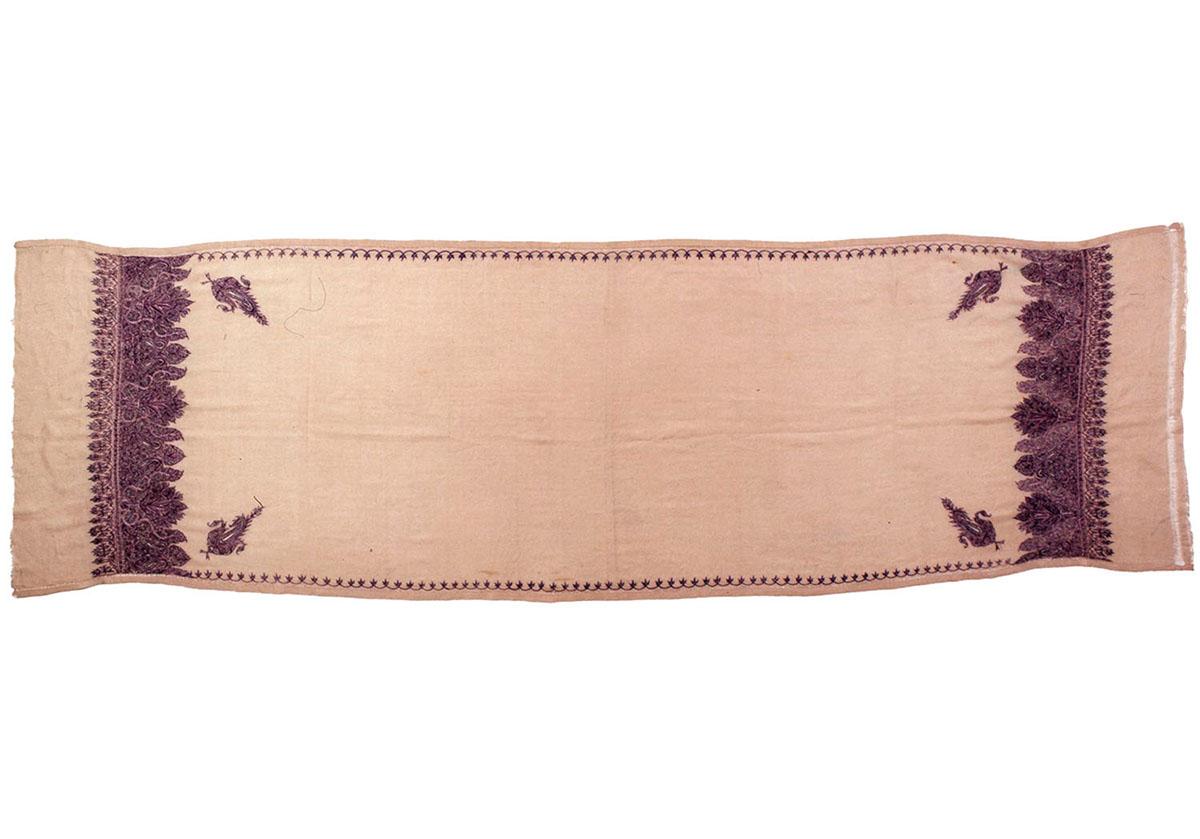
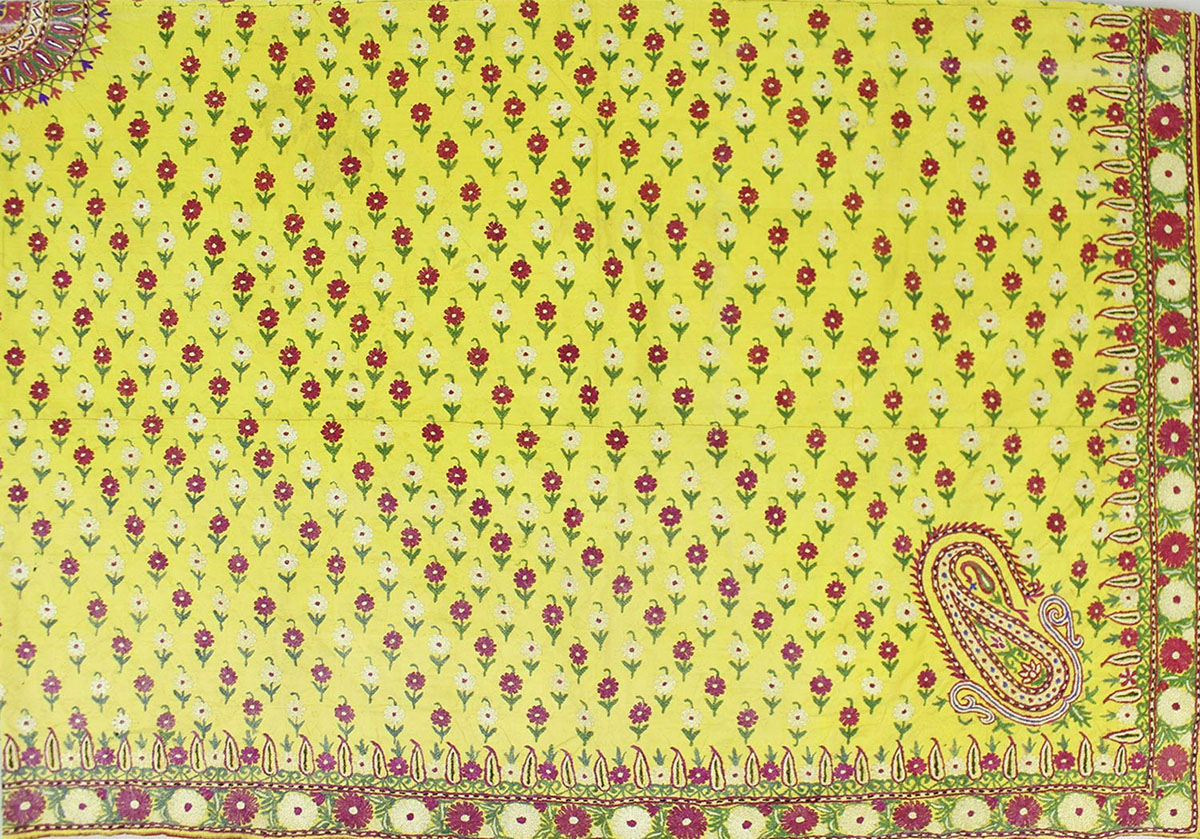
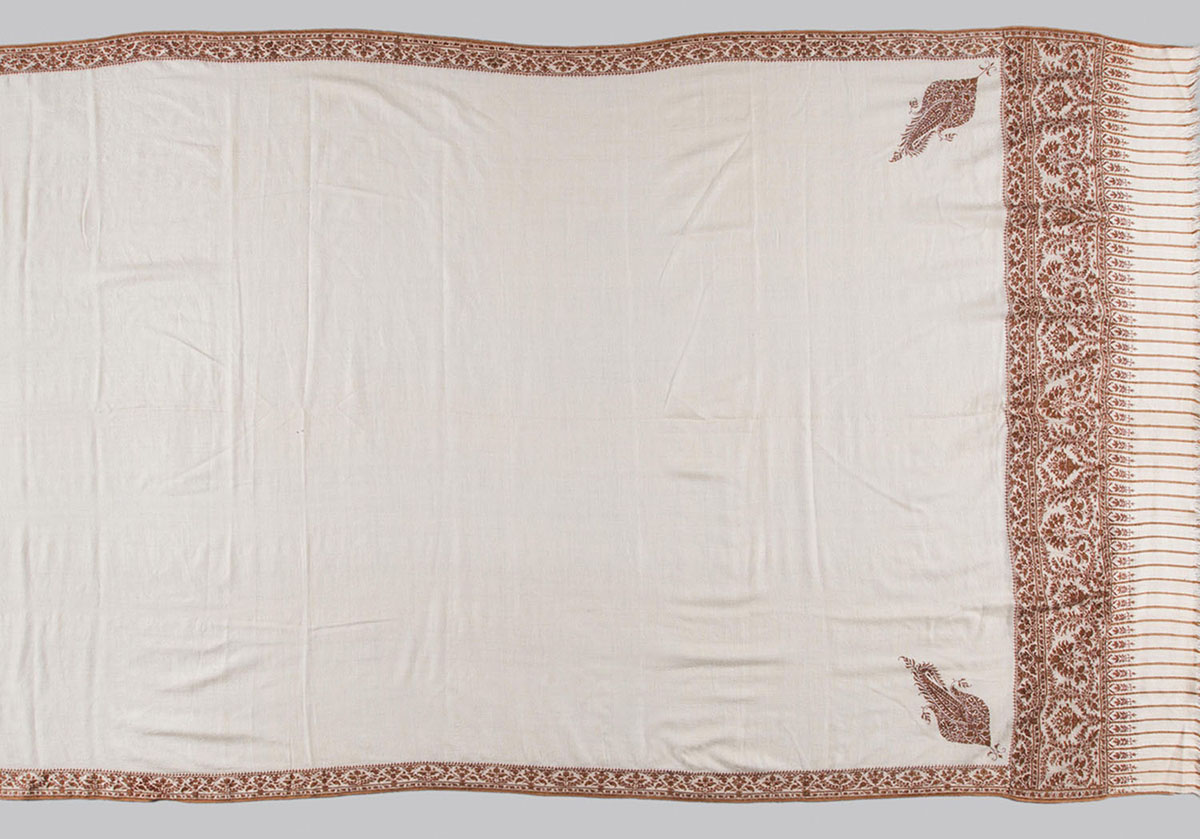
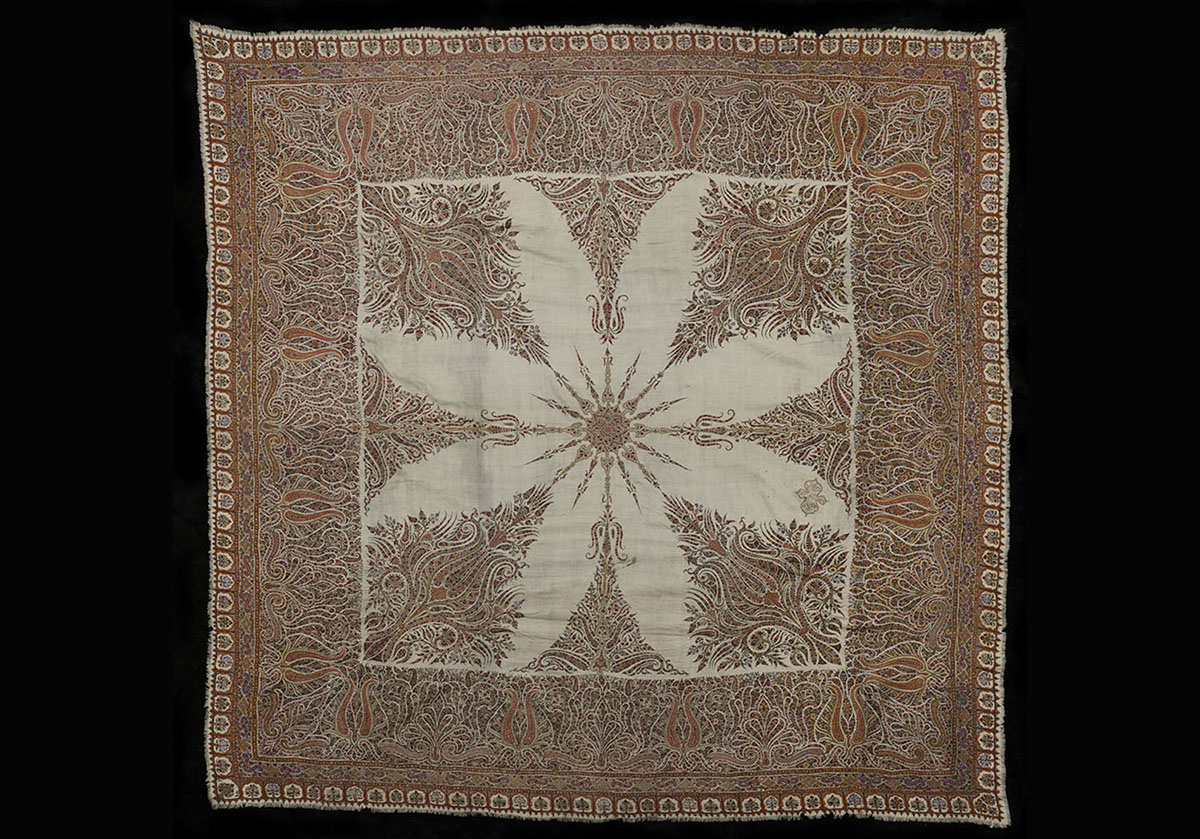
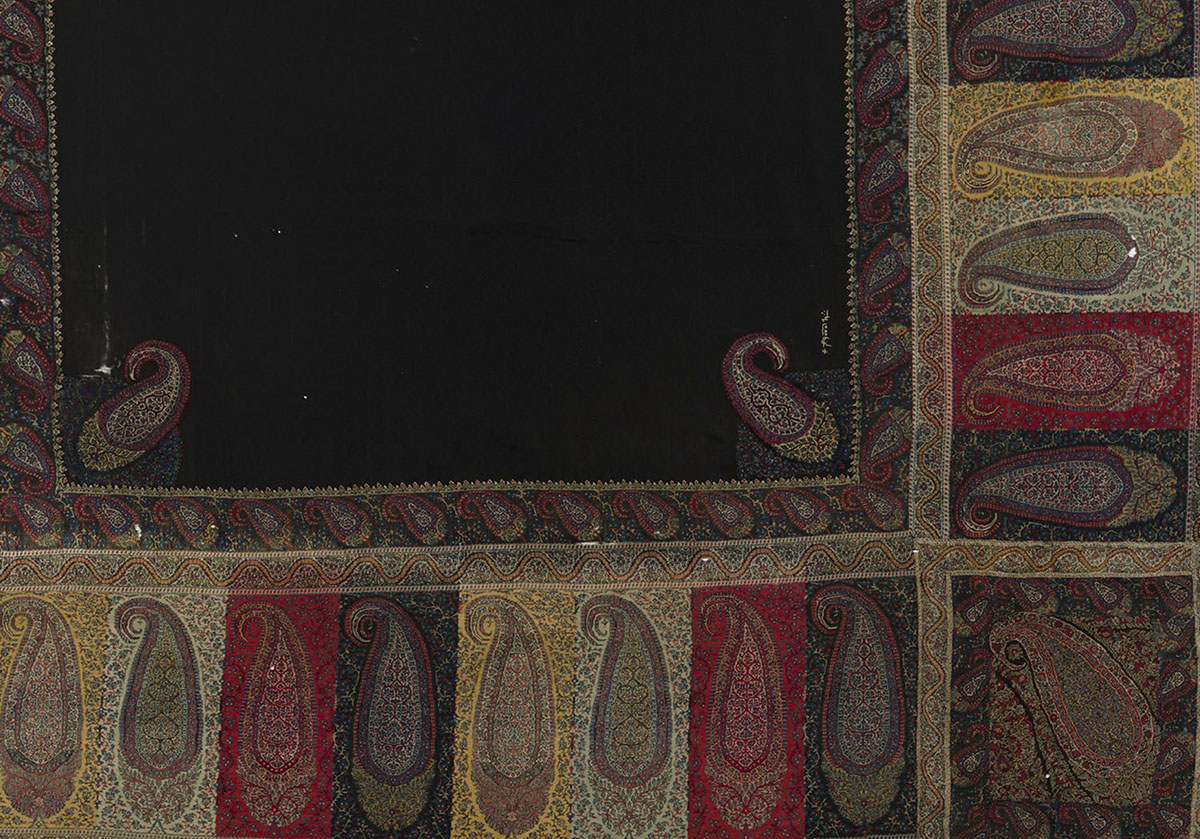

![The façade of the Maneckji Seth Agiary, a Zoroastrian fire temple, is a standout example of the popularity of the Persian Revival Style in Western India in the 19th and 20th centuries. This style was often seen in the architectural patronage of the Parsis, who emerged as one of the most influential mercantile communities of British India. Popular motifs of this style, like the mythical lamasus (winged bulls with human heads) and the faravahar (a winged guardian spirit in Zoroastrianism), drew on the historical art and architecture of the Achaemenid and Sasanian empires from sites like Persepolis, Bisotun, Taq-e Bostan, Naqsh-e Rostam and Naqsh-e Rajab in Persia.
The Parsi community’s adoption of this style occurred largely due to their networks of global commerce and politics, allowing them to access and translate research of ancient Persia into visible symbols that underlined their association with antiquity, imperial power, and art.
نمای آتشکدهی زرتشتی مانِکجی سِت نمونهی بارزی از رواج سبک «احیای [معماری] ایرانی» در غرب هند طی سدههای نوزدهم و بیستم است. این سبک غالباً در بناهایی دیده میشد که پارسیان، از بانفوذترین جوامع بازرگان در هند بریتانیا، بانیشان بودند. نقشمایههای محبوب این سبک، مانند گاو بالدار اساطیری (لاماسو) و فَروَهَر (روح بالدار نگهبان در دین زرتشت)، برگرفته از هنر و معماری شاهنشاهی هخامنشی و ساسانی، در جاهایی چون تخت جمشید و بیستون و طاق بستان و نقش رستم و نقش رجب، بود.
اقتباس جامعهی پارسیان از این سبک بسیار مرهون روابط گستردهی تجاری و سیاسی آنها بود که دسترس به پژوهشها دربارهی ایران باستان و برگردانیدن آنها به نمادهای بصری را ممکن میکرد و بر پیوند پارسیان با دوران باستان و قدرت شاهنشاهی و هنر تأکید میکرد.](https://mapacademy.io/wp-content/plugins/instagram-feed/img/placeholder.png)
